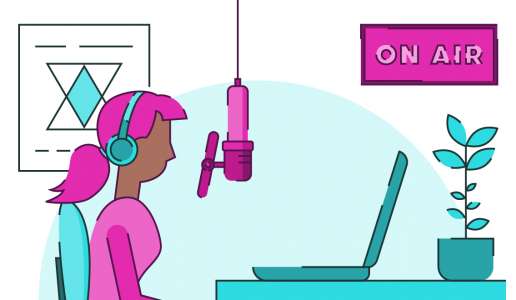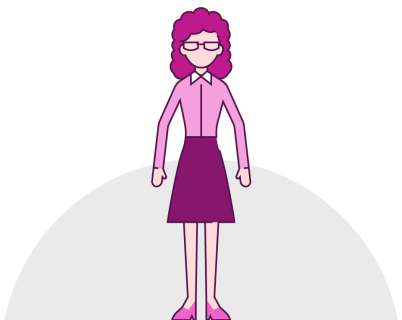The problems with Prezi
- Presentation technology
- Comments: 31
People are bored of PowerPoint. But problems with panning, organising all content on a canvas, and limited animations mean Prezi is not the answer.

Though remote work has helped webinars become omni-present, not all webinars are created equal. Here are a few things you might want to consider before holding your own.
Let’s start at the very beginning – and get our etymology cap on! The word “webinar” is a portmanteau of “web” and “seminar”. It’s an online event hosted and broadcast live to participants, in real time. At BrightCarbon, we frequently run free webinars, called masterclasses, to share our insights on creating great presentations – from writing compelling content, creating visual slides, through to presenting online. We do this because we’re passionate about helping people make better presentations.
I’ll say it! Most webinars are too long. It seems to be pretty standard to schedule an hour, with perhaps 45 minutes of that for the presentation, and the rest for an introductions and a Q&A. But take a moment to think about your audience – you can’t interact with them and stare them down if they pull their phone out, so you’re relying on their will-power (and an inhuman attention span) to make them stay with you for the full time.
So, to answer the question “how long should I present for?” you really need to consider how long you need to achieve your objectives. Generally speaking, any longer than 25 minutes without some sort of change or break can be hard to pull off. People tune out. Don’t schedule an hour because that’s what everyone else does – it’s just too hard to stay interesting when your webinar is in competition with urgent emails and Twitter [insert your social media platform of choice].
Unless you have a good reason not to, schedule half an hour or 45 minutes for your webinar. It’s better to leave your audience wanting more than to lose your them before your call-to-action at the end.
Cut down the five-minute chat that introduces the speaker as you wait for latecomers. If the logic of having that chat is that you don’t want anyone to arrive late and end up wondering what’s going on, then use a minute or so to introduce the speaker, and then a few minutes to present an interesting or surprising statistic or two that illustrates why the webinar topic is important. Then launch into the rest of your content, so that someone arriving a couple of minutes late will still be able to follow your arguments. This approach is much more interesting for those who do arrive on time than five minutes of chit-chat with a host.
Polls and Q&A are a good way to raise audience attention levels during your session. Plan a question or two during the webinar to bring attention levels back up. It makes sense to use questions to break up the time you’ll be presenting for – so if you have 30 minutes of material to present, put a question after about 15 minutes. We don’t think that questions or polls in the middle of your presentation are essential if you’re only presenting for 25 minutes – but if you’re going to present for a long time (30 minutes or more) you need to do something to keep it fresh. Either use polls, or change presenter, or take some questions – to stop things getting too monotonous.
We’re happy to say that our masterclasses are well-received, and we get good numbers registering and attending. What’s interesting though – and this is pretty standard – is that only about 50% of those who register actually show up for the event.
Some of those who register probably know in advance that they won’t make it – but want access to a recording of the event. Others probably expected to make it, but just couldn’t attend on the day. A good number of those who miss a masterclass ask us for a recording. So do some of those who did attend.
So, do we record the 30-minute masterclass and send out the recording? No. We take the slides that we present and use them to record a 10-15 minute narrated presentation, upload that to Vimeo, and send out a link to that video presentation instead. Why?
We do get asked for the full recordings – but at the moment, we don’t plan to share them.
If all this has whetted your appetite and you want to see an example of a great webinar in action, head over to our events page and sign up for one of our online presentation or PowerPoint masterclasses.
Leave a commentPeople are bored of PowerPoint. But problems with panning, organising all content on a canvas, and limited animations mean Prezi is not the answer.
Accessibility often ends up being an afterthought in content creation, but we’ve been thinking for a long time about how it can become part of your foundation when you’re creating presentations – or any other content – using PowerPoint. We’ve been talking to presentation guru, PowerPoint MVP, and anime fan…
If you’re creating a presentation and someone has added images of slides or images of data, it makes it really hard to develop a deck that’s consistently on brand, animated and updatable! Transforming these images into editable slides will make your life so much easier!
Join the BrightCarbon mailing list for monthly invites and resources
Tell me more!BrightCarbon has created several animations for us. The result was always the same: a very clear “wow” effect. I highly recommend BrightCarbon for making complex topics come to life on screen!
Isabel Figge Intergraph

Well said. I deal with quite a few requests to host webinars just to capture a recording. I always remind people that webinar is for live events, and if the intent is to create a self-paced resource, there are better tools — tools designed to create self-paced resources — available for the job.
I’ll be referring a lot of folks to this post!
Thanks for the comment Greg.
Webinar recordings are just not a good way to view slides. Hard to navigate, often slow-paced delivery, and a weird sense of having been better live.
Thanks for sharing.
Remember also, the web (your webinar) is a global market and the earth is … you know … round. So it’s not always convenient for everyone to join your webinar when it’s scheduled … for your convenience, which is fair enough.
So I often sign up KNOWING I’m not getting up at 4:00am to watch it live.
Regards condensing your 30 min press into a 5 min Brainshark, perfect idea. It’s analogous as to why you shouldn’t send anyone a copy of your complete slides pre or post event. Besides, if designed correctly they should be almost useless absent the context of a live presenter.
Dean, fair point. We run our webinars at different times – but really for the European and North American markets. Which is kind of crazy as the guy in BrightCarbon who presents a lot of them is in Singapore – maybe we should schedule some for Asia and Australia/NZ.
They are worth getting up for – but I understand why you might not want to…
Our slides don’t make sense without a presenter – so we couldn’t just send out the slides without narration, and nor would we want to. But we could make the entire 30-minute webinar available on-demand. We choose not to as it does conflict somewhat with trying to get people to the live event, and also because most people won’t find time to watch 30 minutes, but might find time for 10 minutes.
Our recordings do seem to have grown. We aim for something short, but often find they are nearer to 10 minutes now for the condensed version of a 30 minute event.
PS Dean, I found your company website and blog. You should blog again – only one every six months or so, but they are better posts than 99% of the crap that gets written about presentations.